Paint by Inpaint
Learning to Add Image Objects by Removing Them First
1Weizmann Institute of Science
2Technion - Israel Institute of Technology
Presented at CVPR 2025
TL;DR
By creating an extensive pipeline for removing objects from images using a pretrained inpainting model, and by generating realistic object addition instructions via a VLM and an LLM, we have created a large-scale dataset named PIPE. Utilizing PIPE, we train a diffusion model to reverse the object removal process, effectively adding objects to images guided by textual instructions and without the need for input masks, thereby achieving state-of-the-art editing results.
Object Addition Examples












Project Video
Abstract
Image editing has advanced significantly with the introduction of text-conditioned diffusion models. Despite this progress, seamlessly adding objects to images based on textual instructions without requiring user-provided input masks remains a challenge. We address this by leveraging the insight that removing objects (Inpaint) is significantly simpler than its inverse process of adding them (paint) attributed to inpainting models that benefit from segmentation mask guidance. Capitalizing on this realization, by implementing an automated and extensive pipeline, we curate a filtered large-scale image dataset containing pairs of images and their corresponding object-removed versions. Using these pairs, we train a diffusion model to inverse the inpainting process, effectively adding objects into images. Unlike other editing datasets, ours features natural target images instead of synthetic ones while ensuring source-target consistency by construction. Additionally, we utilize a large Vision-Language Model to provide detailed descriptions of the removed objects and a Large Language Model to convert these descriptions into diverse, natural-language instructions. Our quantitative and qualitative results show that the trained model surpasses existing models in both object addition and general editing tasks.
Method
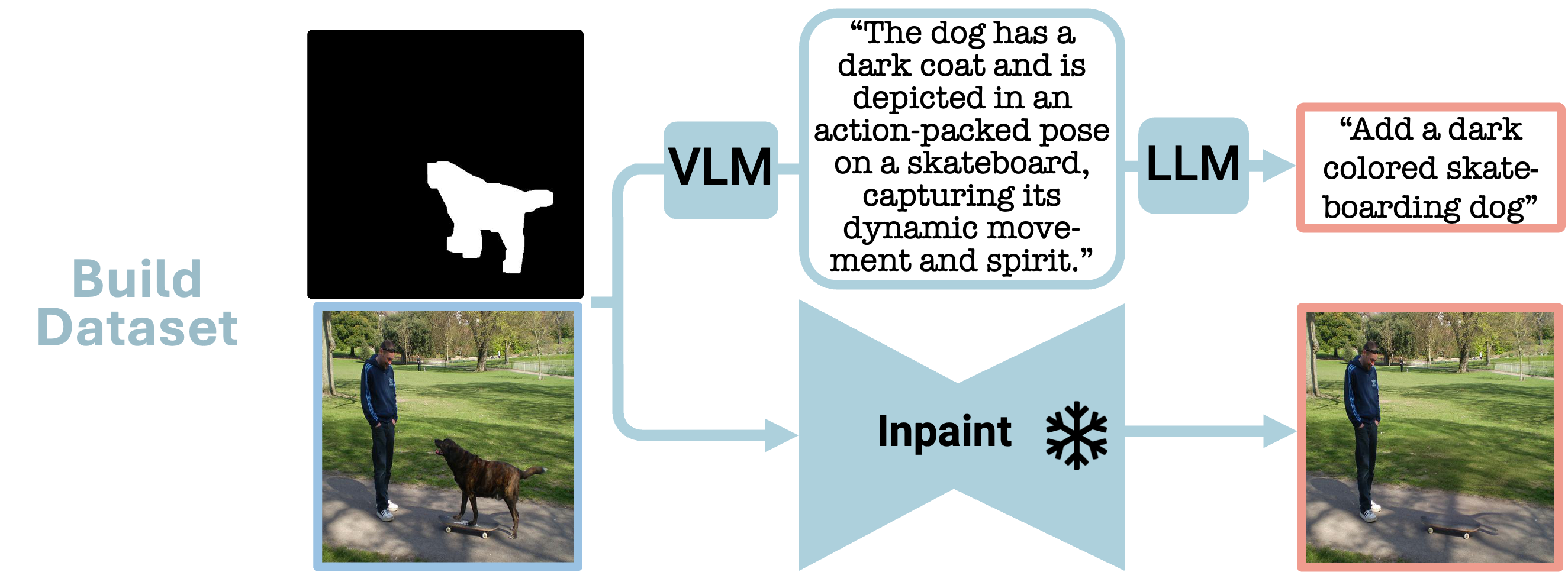
In the PIPE dataset generation phase, two distinct processes are employed:
1. Addition instructions are generated. Illustrated in the figure is the VLM-LLM based instruction generation process, where visual object details are extracted using a VLM and subsequently formulated into an addition instruction with the aid of an LLM.
2. The input mask, combined with the original image, utilizes a frozen inpainting model to remove the object from the image.

In the training phase, the PIPE dataset is employed to train a model to reverse the inpainting process, thereby adding objects to images by following textual instructions, without the need for an input mask.
Object Removal Filtering

In constructing PIPE, we apply several filtering stages to address inpainting drawbacks.
Initially, a pre-removal filter targets abnormal object views due to blur and low quality.
Subsequently, a post-removal inconsistency filter identifies a lack of CLIP consensus among three inpainting outputs, indicating substantial variance and potential object regeneration.
Finally, a post-removal multimodal CLIP filtering ensures low semantic similarity with the original object name.
PIPE Examples
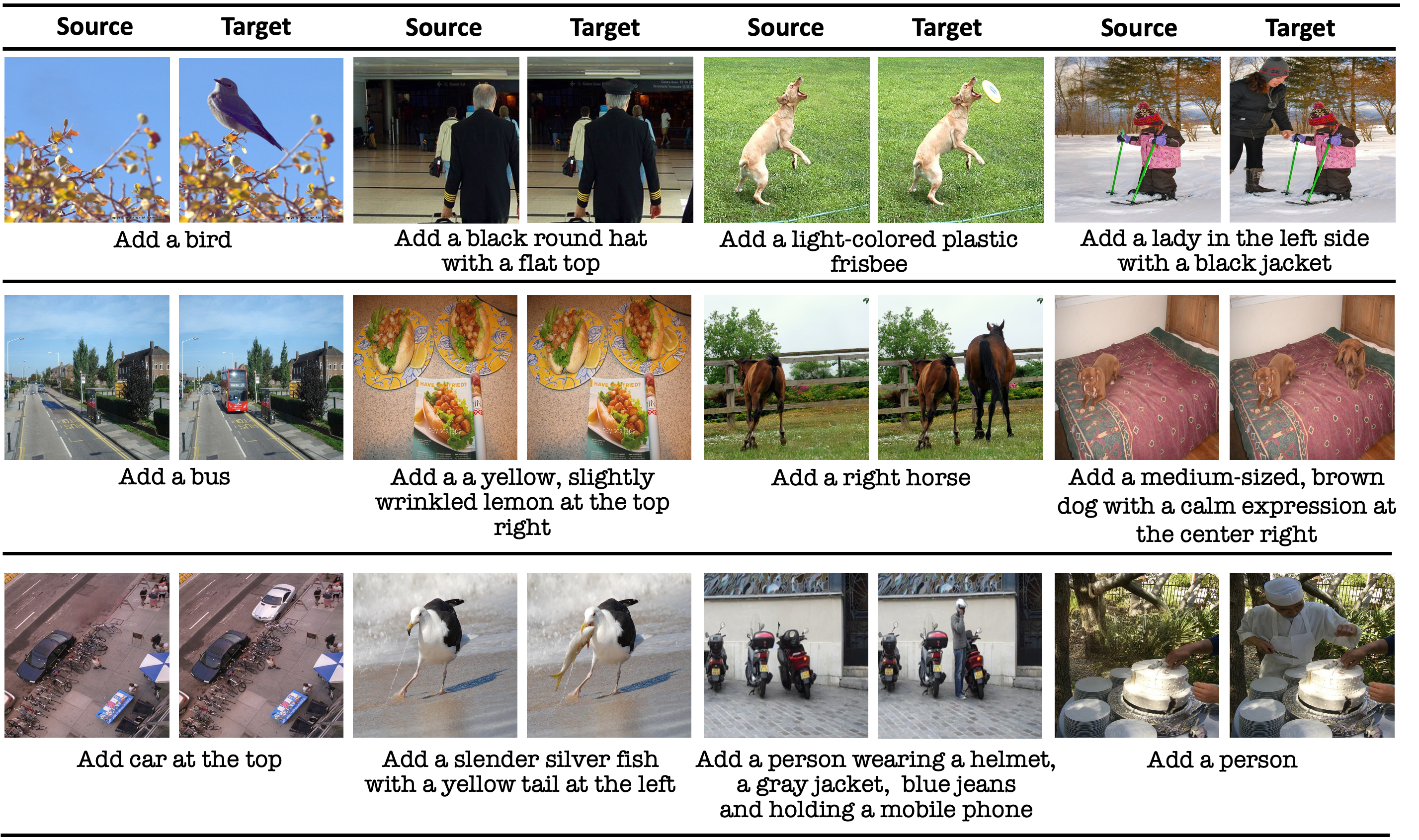
Editing Datasets Comparison
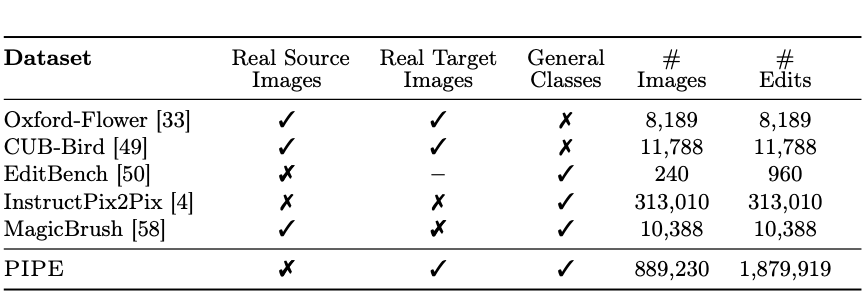
Comparative Analysis With Other Image Editing Models
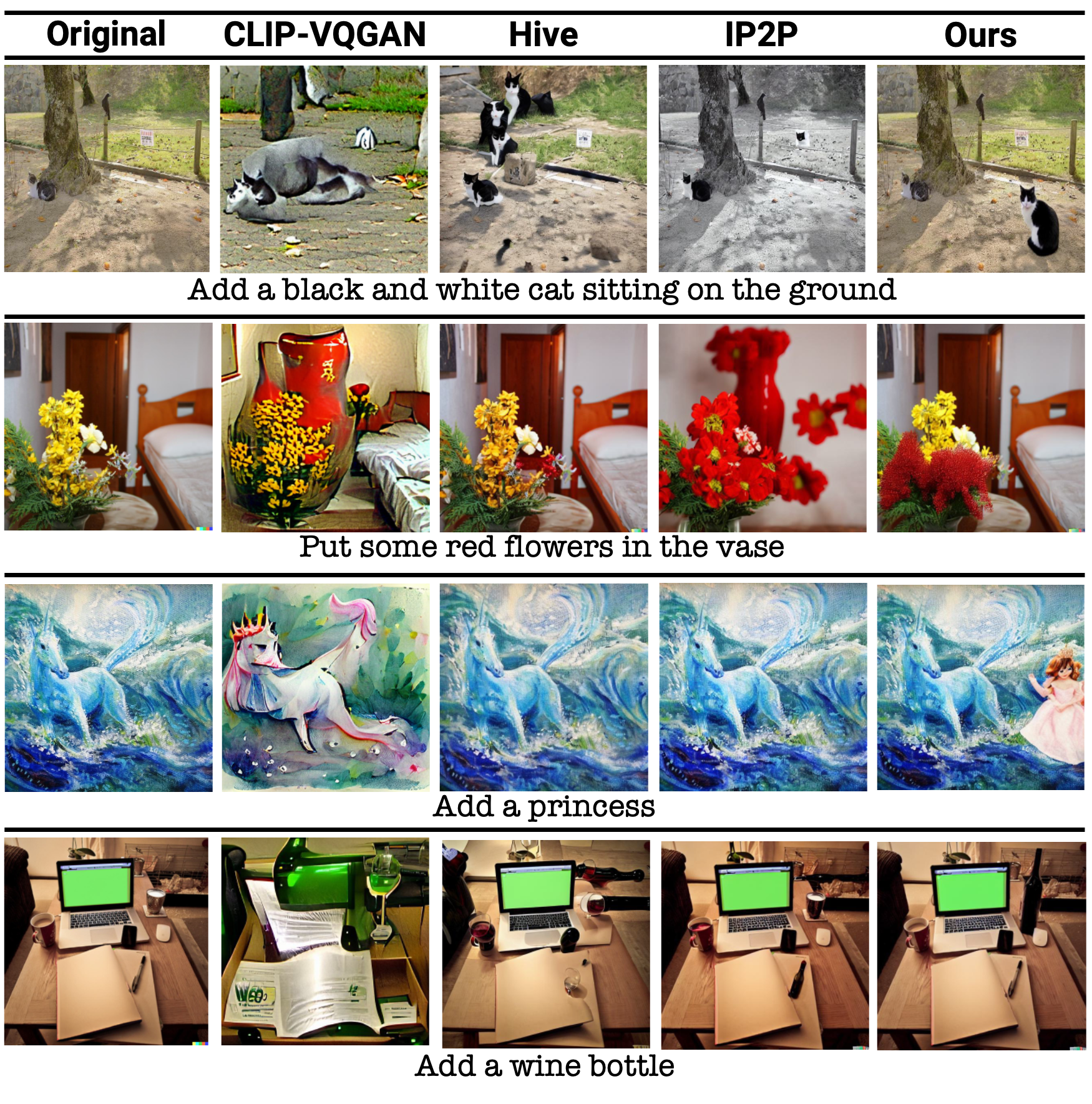
Human Evaluation

The results clearly show a preference for our model compared to InstructPix2Pix,
with an average global preference rate of 72.5% for its
alignment with edit requests and overall image quality.
Leveraging PIPE for General Editing
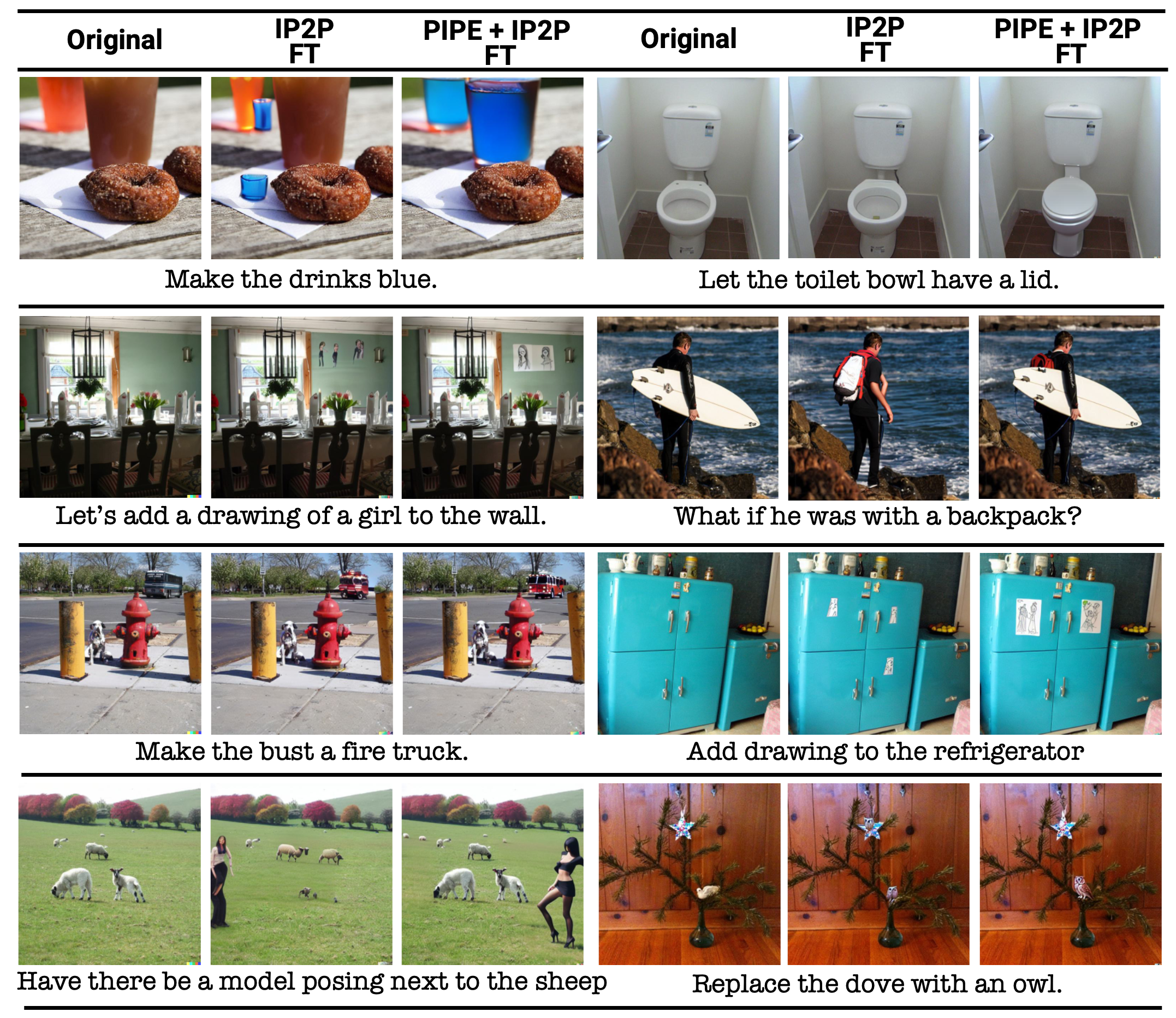
We explore the application of our dataset in the broader context of image editing, extending its use beyond just object addition. PIPE is merged with the InstructPix2Pix general editing dataset to train an editing diffusion model. The examples and quantitative results presented in the paper demonstrate that our model establishes new state-of-the-art scores for general editing.
Multiple Object Addition
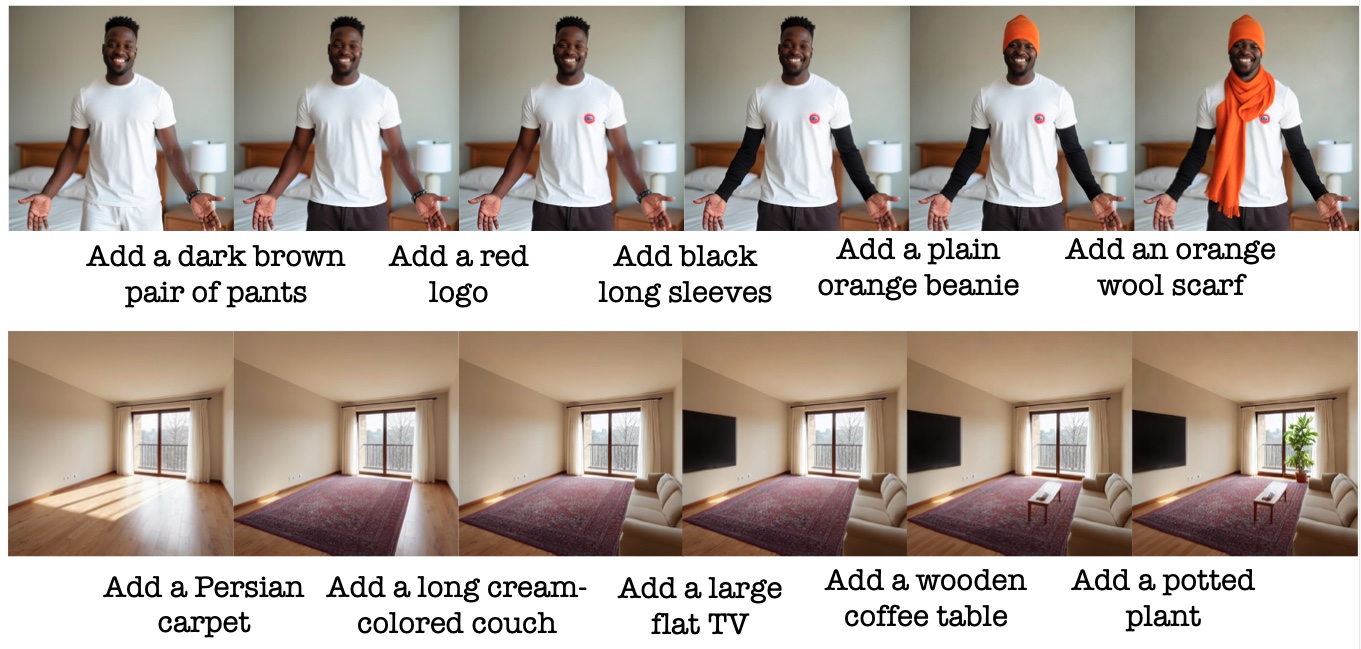
Using our model to add multiple objects through recurrent application presents a challenge: each addition requires a decode–encode cycle through the VAE, which progressively degrades image quality. To mitigate this, we perform all edits in latent space—encoding only before the first addition and decoding only after the final one.
BibTeX
@misc{wasserman2024paint,
title={Paint by Inpaint: Learning to Add Image Objects by Removing Them First},
author={Navve Wasserman and Noam Rotstein and Roy Ganz and Ron Kimmel},
year={2024},
eprint={2404.18212},
archivePrefix={arXiv},
primaryClass={cs.CV}
}


